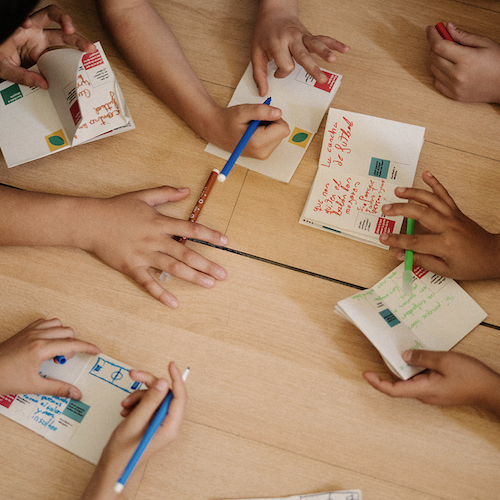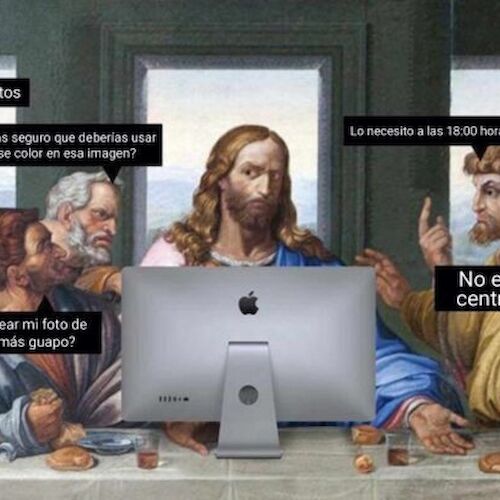What is a briefing and what you need to know to make them effective
Client:
Laintersección.net
Research tactics and methodologies:
Year:
2021
This text is the third part of a series aimed at facilitating the work of design in social communication projects. The first part is about what you should consider before starting, and the second part is about how to communicate with graphic designers.
As we have mentioned before, a key tool for a designer to understand the project they will be working on is a briefing. There are various formats and types of briefings, depending on the project, needs, and the professionals involved. In its simplest version, it can be just a description of the requested services, but if its potential is leveraged, it can be a guiding tool throughout the process to better understand the team or design professional.
In this post, you can download a briefing template in order to familiarize yourself with the format and dynamics and use it in your future projects.
Types of briefings
There are three key types of briefings:
- General briefing: It serves to connect the overall project with the communication area. It is usually the most extensive and detailed because it defines a complex project in its entirety or depth.
- Creative briefing: It is a document to organize the work of the creative team, including the definition of the graphic pieces to be produced, task assignments, definition of visual expectations, etc. It is used to produce the graphic materials, so it is simpler than the general briefing.
- Contrabriefing: Design professionals can respond to each briefing with a modified proposal in case there is a lack of clarity or a need to further develop or change some part. This ensures that they understand the project, expectations, and limitations. It serves to validate the information and reach an agreement.
It is important to note that there is no fixed methodology; these three types of briefings are just a type of process recognized in the world of design. The interesting thing is to consider their functionality and adapt these tools to the needs of the project and the capabilities of the internal team. In other words, we are not looking to replicate an agency dynamic exactly, but using some useful tools like briefings can make our lives easier.
General briefing
As mentioned before, this type of document is for a complex project. It is often used by agencies or creative teams to request large projects, extensive campaigns, or the development and implementation of a graphic identity. It also serves as a bridge between the overall project and the communication project.
Let's use the example of having a project to collect 500,000 signatures for a cause. As part of your strategy, you need to define a communication campaign that will have a certain level of complexity. Writing a general briefing will help you and the creative team define the strategy and the types of materials that could support the objectives you have set. Communication is usually key in this type of project, and it is important to have a broad vision of the scope and where we are headed.
We are sharing a creative briefing template, which again consists of a series of questions but already focused on the final material to be developed. You can download the creative briefing template here.
Creative briefing
If you have started with the general briefing, you don't need to worry about this other document: the creative team will take care of preparing one for each graphic piece to be created (one for a video, another for a poster, for social media posts, etc.). But if your project is simpler and you directly contact a designer for something less ambitious, for example, to request a poster for an event, then you can use this creative briefing format at the beginning and skip the general one.
When we create a briefing defining the materials to be designed, we have to provide all the information that they should contain. For example, for a poster, we need to provide the event title, location, date, time, if registration is necessary, etc. As much as possible, and to save time, it is better for the designer to work directly with the final content (not asking them to use placeholder text and then provide the real content later). In addition to this, it is convenient to have a system to share the work and make revisions. It can be a document storage platform (like Drive, Box, Dropbox, or similar) where you can have the briefings and updated graphic materials. This way, when there are changes, we have better organization and reduce the possibility of spreading a non-final version.
We are sharing a creative briefing template, which again consists of a series of questions but already focused on the final material to be developed. You can download the creative briefing template here.
Contrabriefing
If we create a general briefing from the start, it will be easier for the designer to ask more specific questions about the project. Also, when we are doing our first briefings, it is normal to have doubts or some insecurity about how to do it. In these cases, creating a draft and asking the design team for a contrabriefing is completely valid. In any case, the contrabriefing will occur as a response and/or alternate proposal from the designer, agency, or team to reach agreements on the options to solve the challenges you propose.



